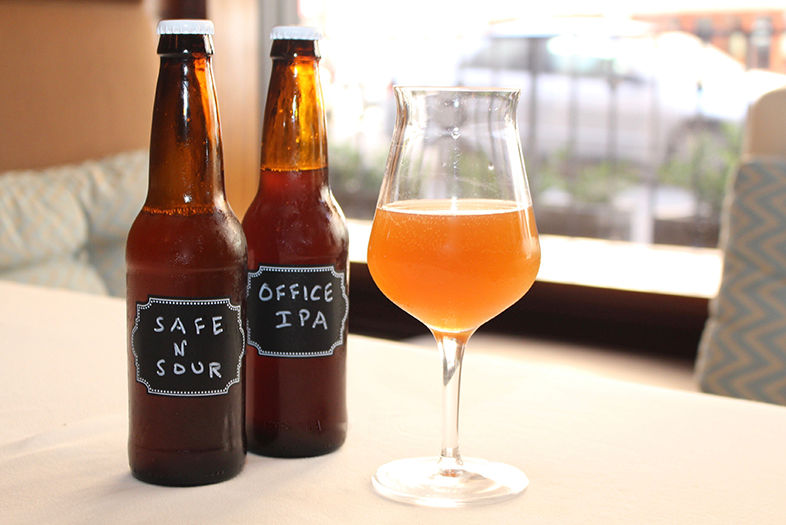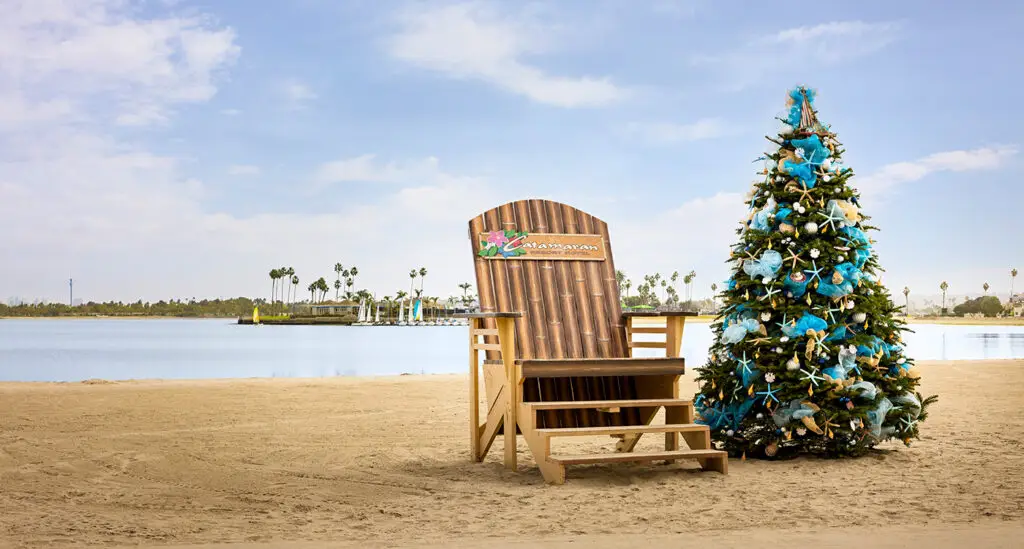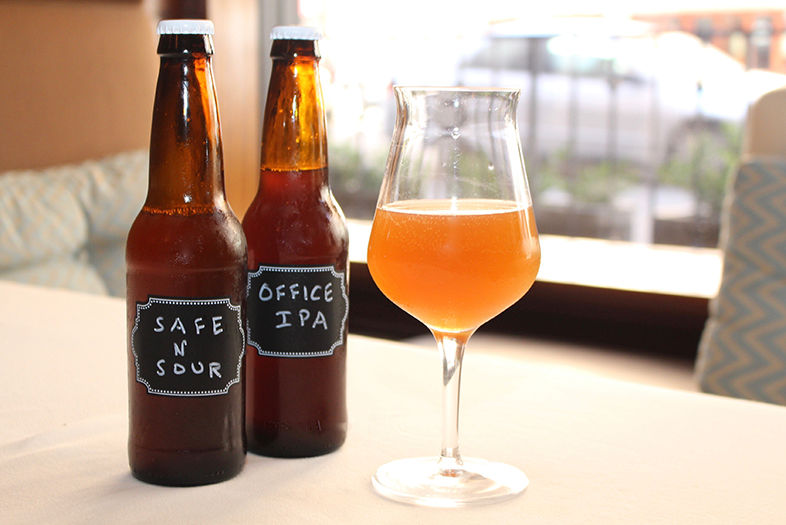Sure, we all drink craft beer and cocktails because we enjoy the flavors. The happy alcohol buzz that comes along with those beverages is just an added benefit, even though that benefit can easily turn into a liability if it’s not enjoyed in moderation. So, what if we could enjoy some of these craft refreshments without the alcohol component? Going 0% ABV seems to be a growing trend in the craft beverage world, and the folks at the US Grant are some of the few locals working to address that demand.
Jeff Josenhans is the director of banquets, restaurants, and bars for the US Grant; he’s recently been focusing on revamping his beverage menu so he can offer more non-alcoholic choices to his patrons. As I chatted with him about his newly invigorated program to produce alcohol-free craft beer, Jeff opened a couple of bottles of his most recent products—an IPA and a sour—for us to taste. Although they don’t deliver the bright, floral flavors and aromas you get from a freshly tapped tasting room beer, these beverages are nonetheless complex and interesting. It seems the method by which the alcohol is removed accelerates a process similar to barrel aging and imparts a kind of barrel-aged fortified quality.
“The idea really stemmed from us re-evaluating our entire non-alcoholic program,” Jeff says. He explains that he changed everything from their cranberry juice (now cold-pressed instead of from concentrate) to their new housemade sarsaparilla soda. They also added Modern Times nitro cold brew coffee, premium Australian craft sodas, and a bunch of cocktails based on the Seedlip catalog, which is a non-alcoholic spirit company from the U.K. that’s best known for their gin (it’s technically called a “hydrosol”—it’s basically gin-infused water, with all the aromas and flavors of gin but none of the alcohol).
Jeff feels he and his team often have their “fingers on the trends” and can often see what’s coming in terms of customer tastes. “On the food side, it’s been craft-focused, farmer’s market driven, and artisanal,” he says. “I knew those trends would influence craft cocktails as well. You just had this gap for the folks who wanted something non-alcoholic. They would just get left to order a Coke or a ginger ale or something. I personally feel the need for non-alcoholic options more because I’m drinking less these days. There are times where I’m hanging out with my daughter, for example, and I don’t want to consume alcohol but I still want to have something that’s craft.”
We decided to use the casks, remove the alcohol, and sort of re-create them as something else. Something that would also simultaneously fill that gap in the non-alcoholic category.
So, driven by his own cravings and the perceived desires of his patrons, Jeff decided that their weekly cask ales would provide the basis for their non-alcoholic beer program. “Sometimes we finish the casks and sometimes we don’t,” Jeff says. “So when we don’t, instead of the kitchen making sauces out of them or whatever, we decided to use them, remove the alcohol, and sort of re-create them as something else. Something that would also simultaneously fill that gap in the non-alcoholic category.”
Jeff explains that the Grant gets a lot of “power lunch” patrons—judges, lawyers, executives—and back in the day, those people would drink dry martinis, but that’s not necessarily the case anymore. The non-alcohol offerings give those diners the option of upgrading their beverages to craft without the downside of alcohol. “Our patrons love it,” Jeff says. “The Office IPA in particular has been flying, especially at lunch. That was kind of the intention. The lunch crowd is where it’s at.”
To make the beer, which is made from the cask ales they bring in from local breweries, the first step is to filter out all the solids and then transfer the liquid to another container so it can settle. The beer then has to be heated. At the Grant, they use an immersion circulator, which keeps the liquid at 180º F for about 30 minutes. This is usually all it takes to evaporate most of the alcohol. Next, the beer is cooled back down and the alcohol is measured to confirm that most is gone. The next step is kegging and carbonation, and finally, it’s bottled and capped.
The Grant’s program is sort of improvisational, in that Jeff only does it with cask beers that have not been completely sold out over the weekends. That means the kinds of beers he uses are always changing, as are the breweries from which they come. Jeff has converted six or seven cask ales so far, including a blonde, a sour, and a few hoppy beers—and all the batches have been very small quantities. Acoustic Ales Willow Wolf, Hess Grazias, and a pale ale from 32 North have been among the initial base beers, and future plans include a batch with 72 and Hoppy from Bay City Brewing.
“I’d prefer to buy it,” Jeff says of the non-alcoholic beer. “It would be a whole lot easier for us. But there’s no non-alcoholic craft beer out there right now. There’s light alcohol, but no non-alcohol crafts.”

The US Grant is Making Non-Alcoholic Craft Beer
PARTNER CONTENT
The US Grant has started to make non-alcoholic craft beer from local cask ales. | Photo: Bruce Glassman
















